Ducati V4 Granturismo
Ducati have gone all-out overnight with a cavalcade of videos and information surrounding the launch of the new V4 Granturismo engine.
While the switch from the iconic L-Twin to V-Four power in their premium sportsbike flagship took place in 2018, their latest touring platforms, the Multistrada, has until now stayed faithful to Ducati’s twin cylinder roots and is currently powered by a 1262 cc DVT Testastretta engine producing 158 horsepower and 129 Nm.
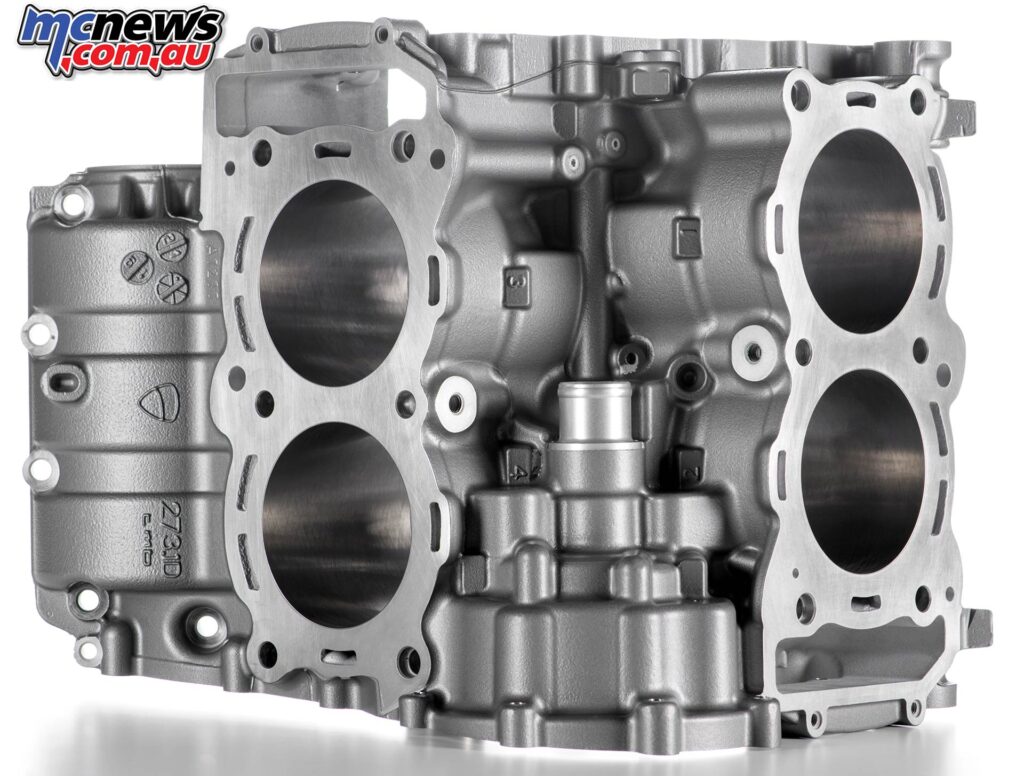
The new 1158 cc 90-degree Euro 5 spec’ V-Four unveiled overnight makes 170 horsepower, with that peak number arriving 1000 rpm higher than the big twin’s 158 ponies.

The V-Four almost matches the DVT Testastretta for peak torque, at 125 Nm it is only 4 Nm shy of the twin-cylinder and that peak arrives only 1250 rpm later.
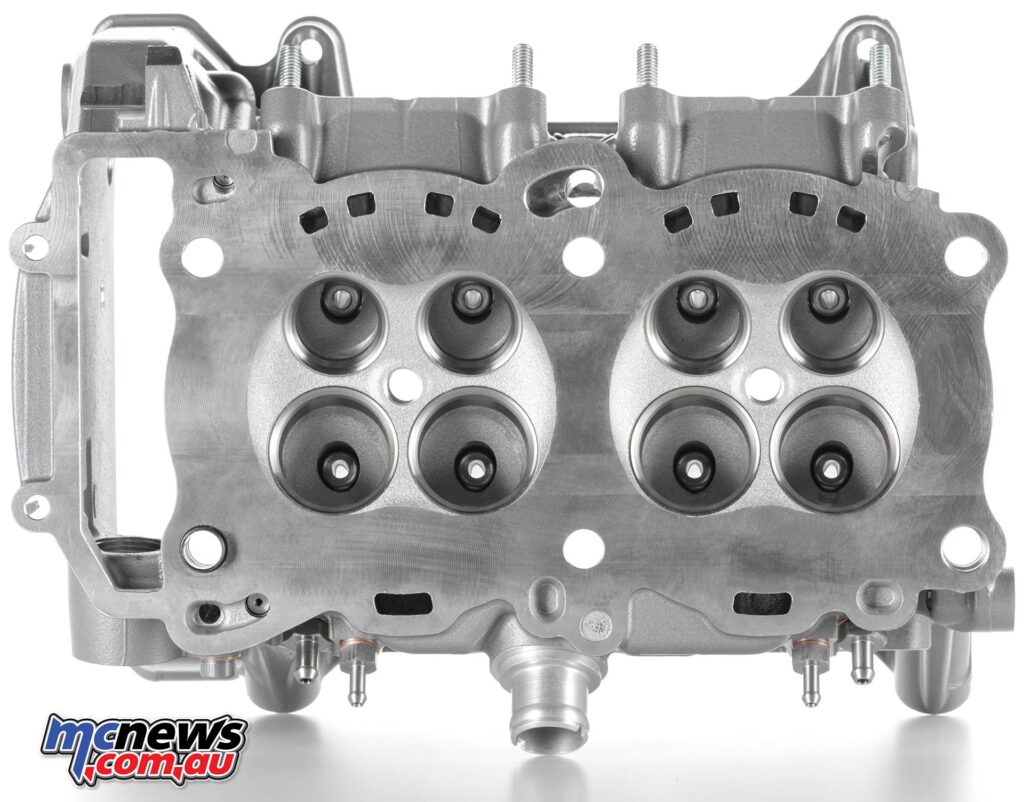
Shorter gearing to take advantage of those rpm sees Ducati also claim that the new engine bests the twin when it comes to low and mid-range roll on performance in third and fourth gear.
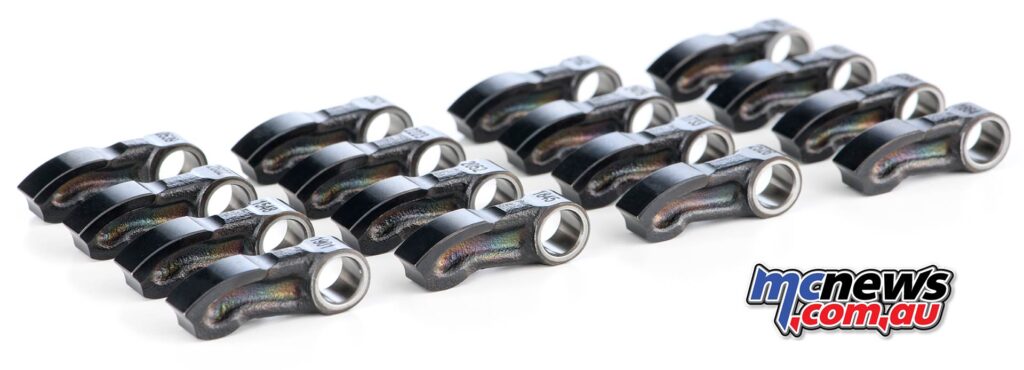
Remarkably, at 66.7 kg the V-Four is also 1.2 kg lighter than the DVT twin while also benefitting from being much more compact, it is 20 mm wider, but a full 95 mm lower in height and 85 mm shorter in length which allows for much more flexibility in chassis design.
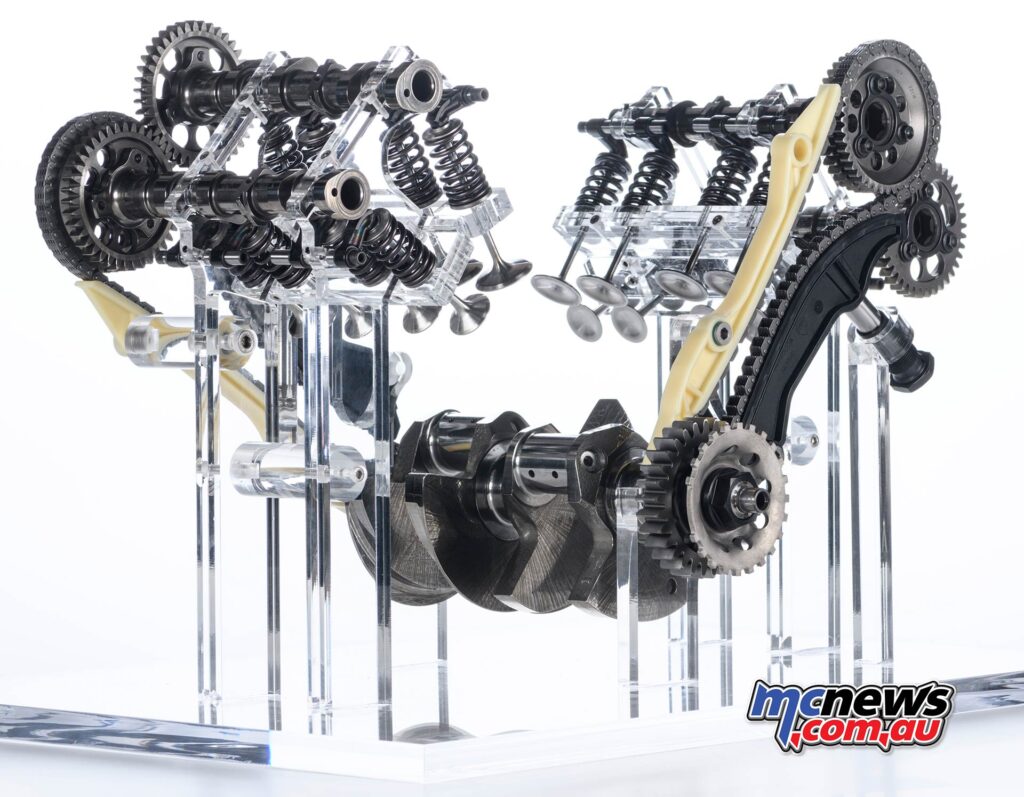
The new engine takes its inspiration from the sporting V-Fours already in production and boasts a counter-rotating crankshaft with 70-degree offset pins that deliver their trademark Twin Pulse firing order and a heady 14:1 compression ratio.
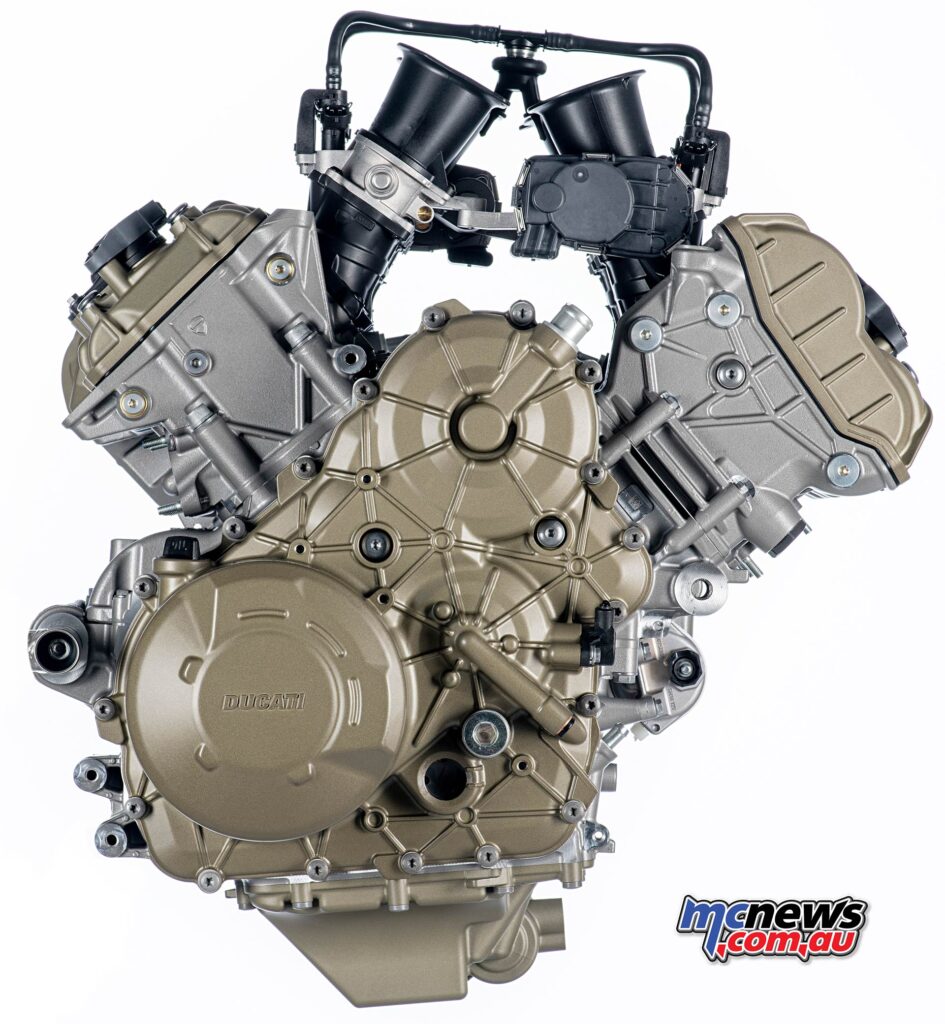
A 2 mm larger bore is responsible for the hike in capacity from the 1103 cc of the Panigale to 1158 cc for this sports-touring Granturismo application that will power the coming fourth generation of the Multistrada family.
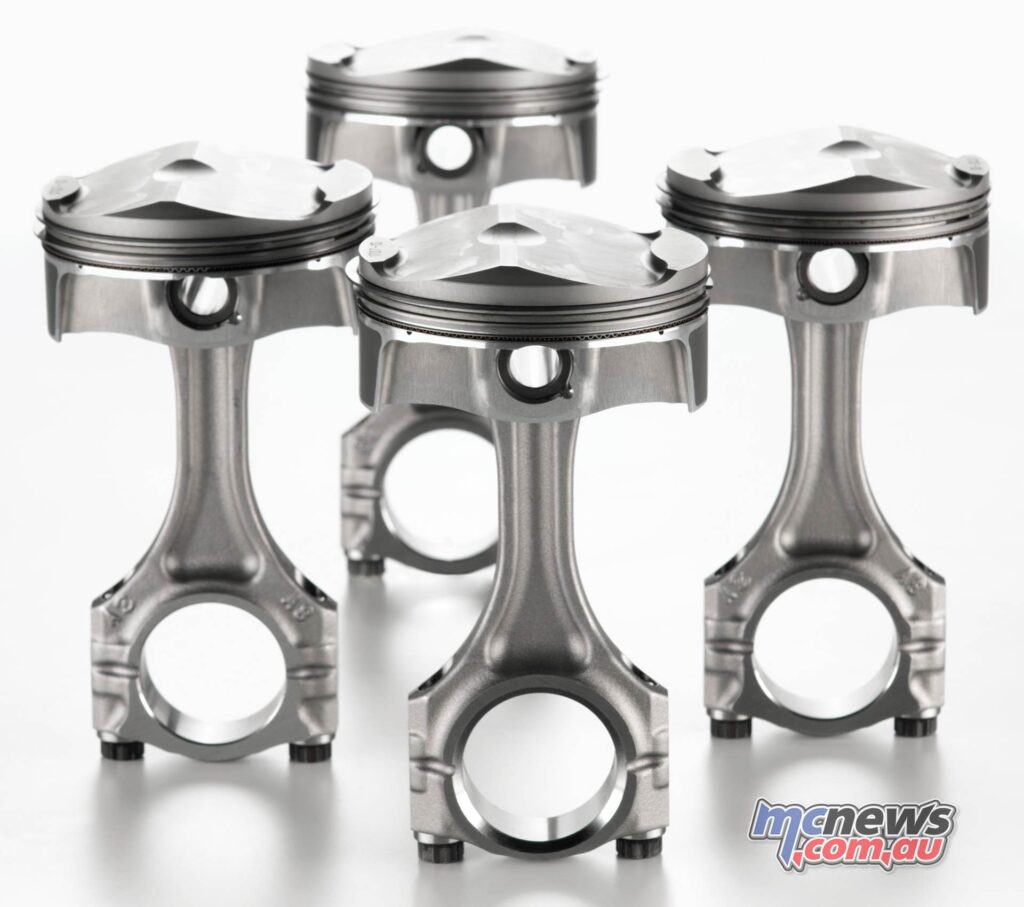
Once infamous for high servicing costs Ducati have worked very hard over the previous decade to shrug off that reputation with longer and longer valvetrain service intervals and this new V-Four pushes that envelope further with clearance checks required only every 60,000 km. Oil and filter changes for the semi-dry sump are required every 15,000 km.
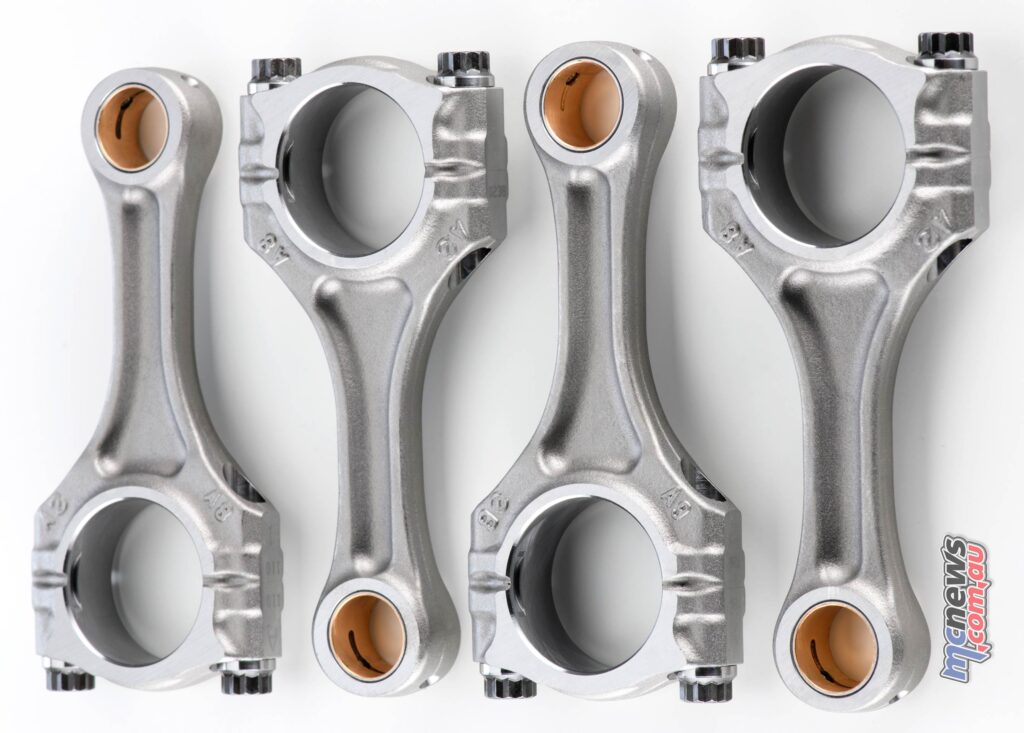
One development that might insult some Ducatisti purists is that Ducati have gone away from their epochal Desmodromic valvetrain in favour of the conventional steel valve spring and finger follower set-up used by most manufacturers.
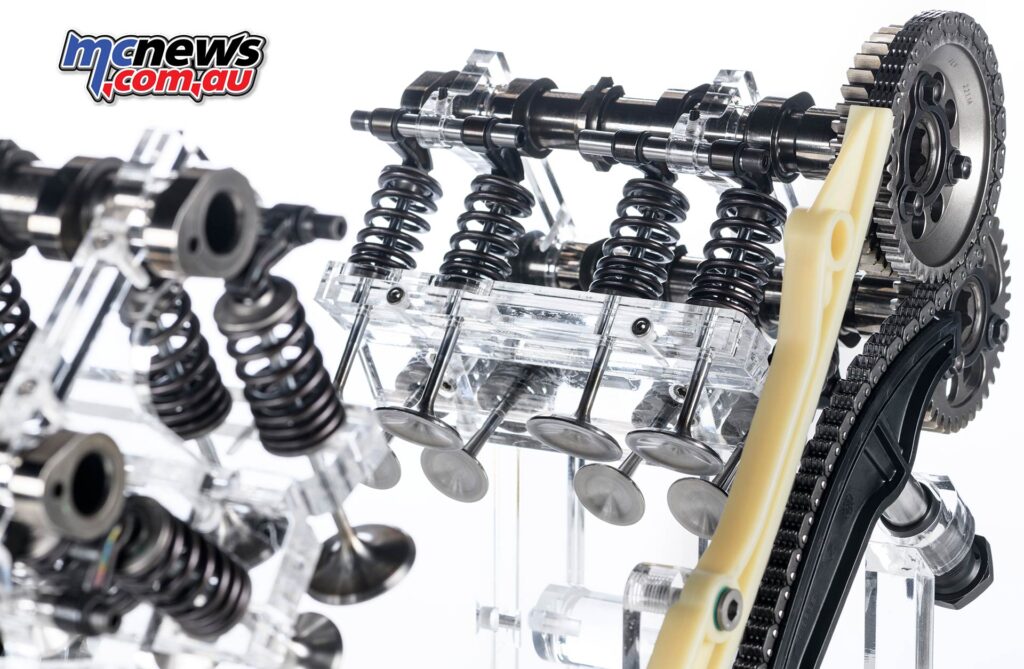
Ducati state that their expertise developed with their Desmo systems has enabled them to achieve a reliable high-performance valvetrain. In the Granturismo application the intake valves are 33.5 mm and the exhausts 26.8 mm.
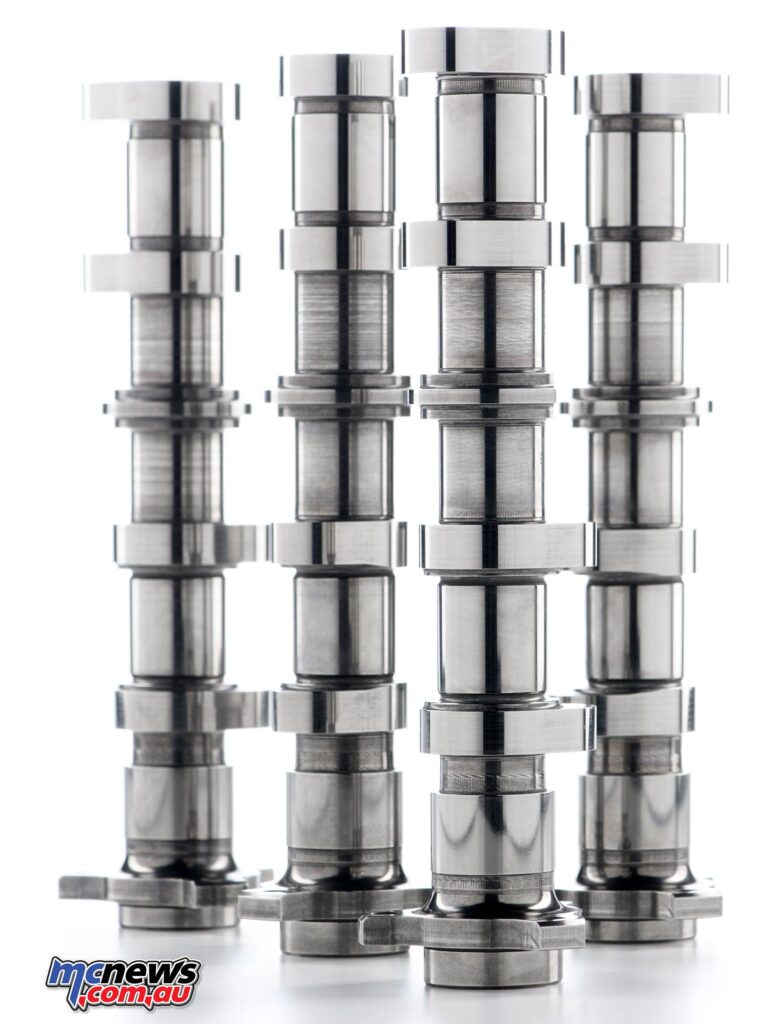
Ducati also state that this engine is, as you would expect, much smoother throughout the rev range than the twin and has a much shorter first gear than its sportsbike brethren to help with low-speed riding.
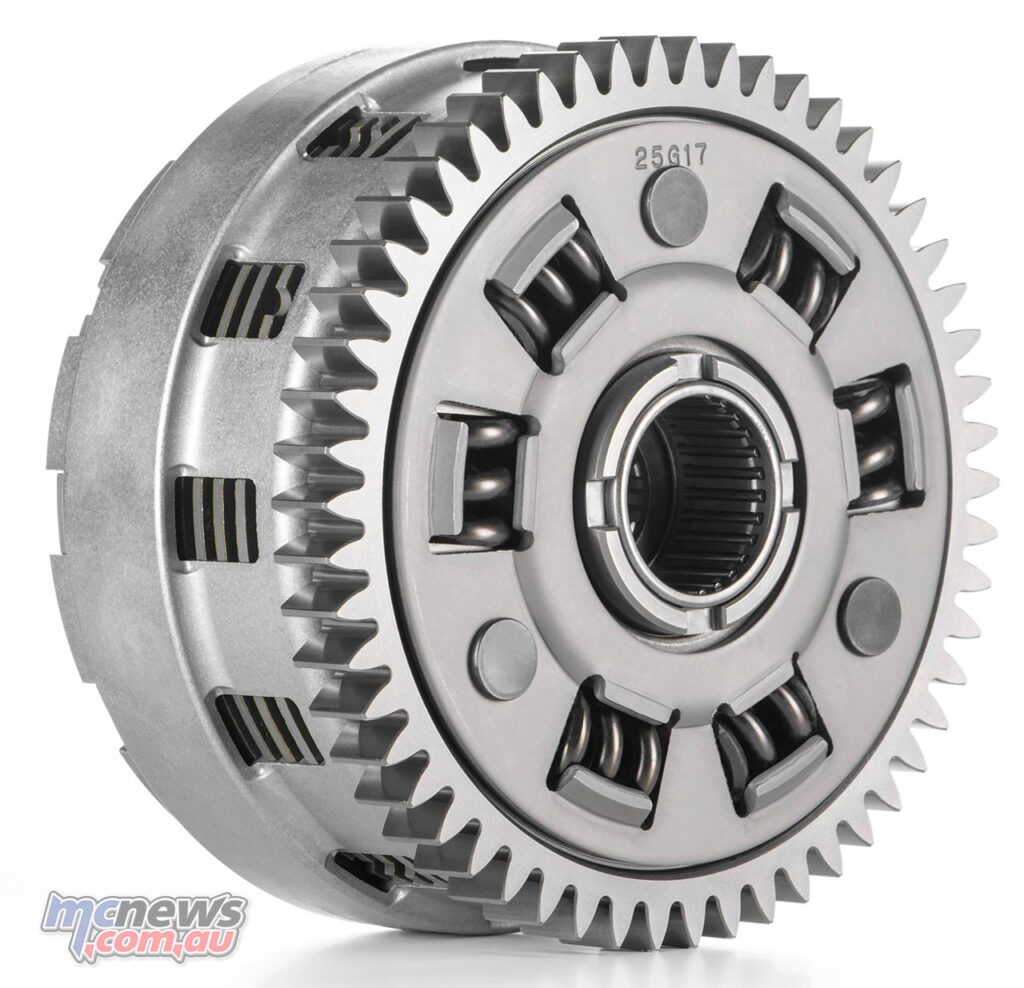
Compared to a pure performance-oriented engine like the Desmosedici Stradale, the V4 Granturismo engine has smaller 46 mm oval throttle bodies, longer ducts and optimised combustion chambers.
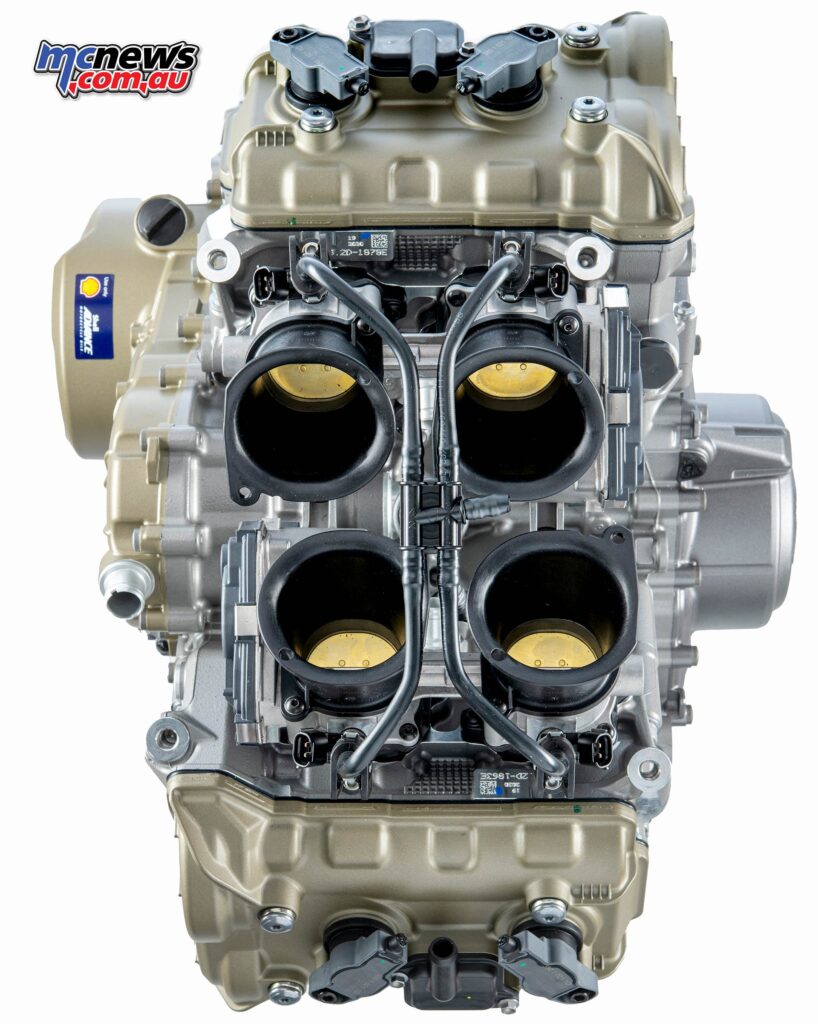
The throttle bodies of each bank are driven by a dedicated electric motor and can activate the throttles asynchronously between the two banks. This solution, thanks to the complex control strategies managed by the full Ride by Wire system, allows the rider to shape the character of the engine according to the selected Riding Mode.
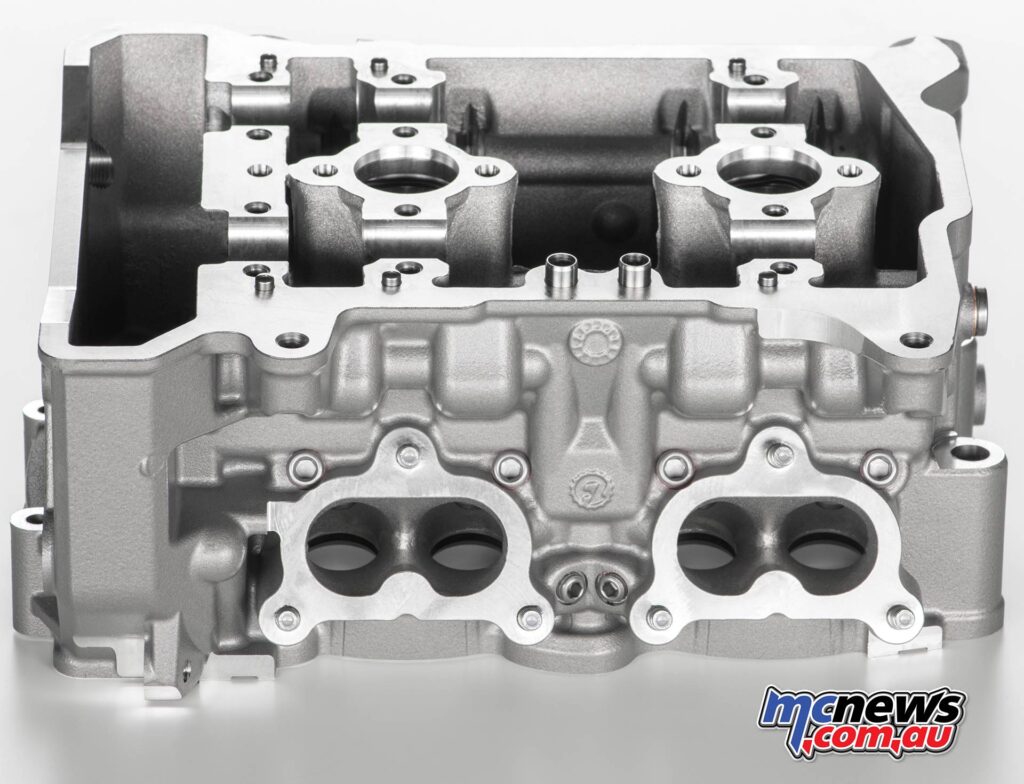
A common bugbear with Vee engines in motorcycle applications is the great amount of heat generated immediately beneath the rider by the headers of the rear cylinders, to help counteract this Ducati have employed rear cylinder deactivation at idle to help reduce the build-up of heat stress in stop-start city riding scenarios.
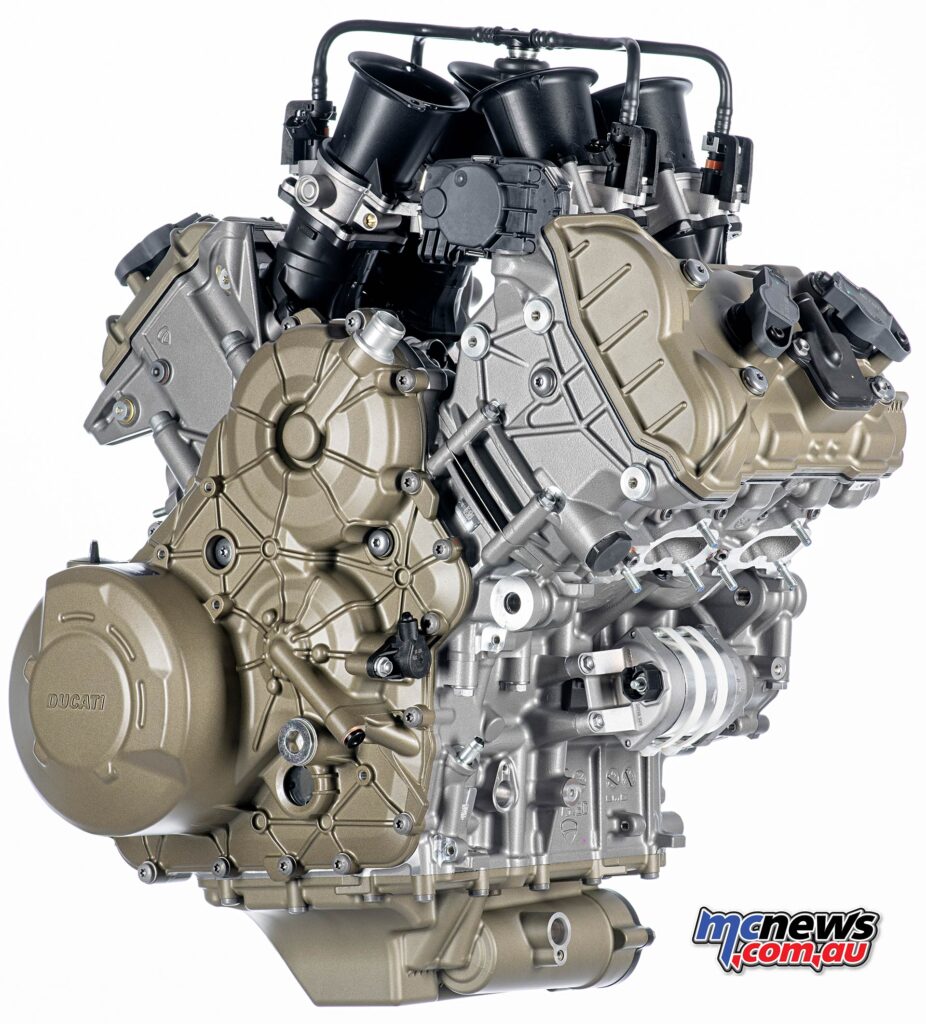
This new powerplant looks to be an exciting step forward and I can’t wait to see what other surprises that the fourth generation Multistrada platform might have in store for us.
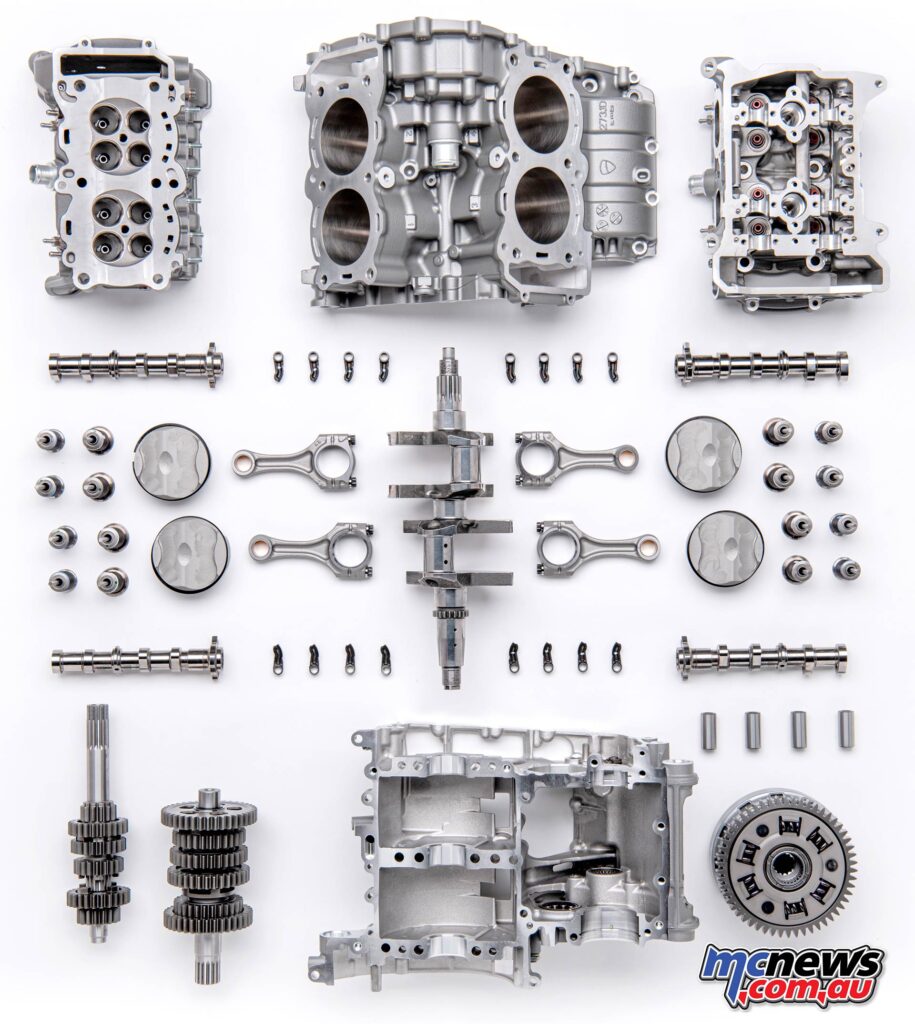
Ducati V4 Granturismo main technical data
- 1158 cc 4-cylinder 90-degree V engine
- Bore x stroke 83 x 53.5 mm
- Compression ratio 14:1
- Maximum power 125 kW (170 hp) at 10,500 rpm
- Maximum torque 125 Nm (12,7 Kgm) at 8,750 rpm
- Euro 5 homologation
- Distribution part chain, part gear – timing with dual overhead camshaft, 4 valves per cylinder
- Counter-rotating crankshaft with crank pins offset at 70°
- Wet multiplate anti-patter servo clutch
- Semi-dry sump lubrication with three oil pumps: 1 delivery and 2 return
- Fuelling with four oval throttle bodies (46 mm diameter equivalent)
- 6-speed gearbox with Ducati Quick Shift (DQS) Up & Down System
- 60,000 km maintenance valves interval























